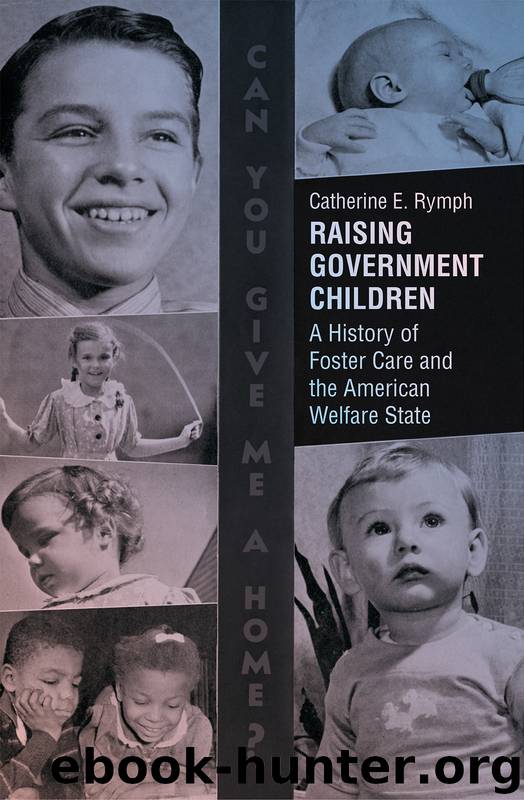Raising Government Children by Rymph Catherine E

Author:Rymph, Catherine E.
Language: eng
Format: epub
Publisher: University of North Carolina Press
Published: 2017-01-15T00:00:00+00:00
“We Need Homes.” Cornelia Ougheltree’s Finding Foster Homes detailed strategies for recruiting African American foster families.
But how were agencies to get black families interested in fostering in the first place? Here there were “cultural problems” to tackle. One such factor seemed to stem from black communities’ “lack of knowledge and acceptance” of foster care and other welfare services.68 The organizers of a home-finding project in Michigan suggested that population changes during and after the war affected the dynamics of foster care services around Flint. Large numbers of southern, rural blacks moving into the area in the early 1950s brought with them their own suspicions of child welfare agencies. Due to the “established cultural pattern of southern Negroes to take care of their own homeless children,” the absence of child welfare services for black children in the South, and the lack of experience with “interracial participation and cooperation in the solution of social problems,” recent black migrants were left “distrustful” of the established programs in the Flint area and uninterested in becoming foster parents.69 Thus home finders in a number of cities embarked on special recruitment campaigns intended to overcome black resistance to child welfare services in general and foster care in particular.70
“Cultural factors,” then, could refer to the theory that black families’ backgrounds made it difficult for them to appreciate the benefits of foster care and thus needed better information. At other times, “cultural factors” referred more openly to insensitivity within white agencies. When Margie Friend of the Kentucky Department of Child Welfare asked for help in finding homes for black and mixed-race children, the Urban League’s Jeweldean Jones replied tersely: “We have found that many social workers have little understanding of the cultural and value factors affecting the Negro’s use of agency services.” If agencies wanted to begin serving minority children, Jones suggested, they needed to establish training programs with their staff to “sensitize them to these concerns.”71 Was the problem, then, one of educating black families or of educating white social workers? Indeed, the emphases of the Child Welfare League on the one hand and those of the Urban League on the other indicate that child welfare organizations and civil rights organizations did not always understand the dynamics of foster care for black children in the same way. Billingsley and Giovannoni argue that whites typically saw the problem primarily in terms of persuading more (and allegedly “better”) black families to foster, while black civil rights organizations were more apt to emphasize broader structural inequalities.72
Among the systemic inequalities limiting the number of black foster homes were poverty and racism inherent in both policy and custom. Income inequality and segregation contributed to living conditions and family arrangements that meant many black families did not meet agency requirements for fostering (hence the idea of “relaxing standards” in order to recruit black foster families). Furthermore, Urban League officials pointed out that the problem of illegitimate birth—which was rising among both whites and blacks—affected black children differently because of the lack of adoptive homes available for black children.
Download
This site does not store any files on its server. We only index and link to content provided by other sites. Please contact the content providers to delete copyright contents if any and email us, we'll remove relevant links or contents immediately.
| Anthropology | Archaeology |
| Philosophy | Politics & Government |
| Social Sciences | Sociology |
| Women's Studies |
On the Front Line with the Women Who Fight Back by Stacey Dooley(4699)
The Lonely City by Olivia Laing(4572)
The Rules Do Not Apply by Ariel Levy(4529)
Bluets by Maggie Nelson(4268)
The Confidence Code by Katty Kay(4041)
Three Women by Lisa Taddeo(3281)
Inferior by Angela Saini(3152)
Not a Diet Book by James Smith(3152)
A Woman Makes a Plan by Maye Musk(3146)
Confessions of a Video Vixen by Karrine Steffans(3104)
Pledged by Alexandra Robbins(3050)
Wild Words from Wild Women by Stephens Autumn(2939)
Nice Girls Don't Get the Corner Office by Lois P. Frankel(2936)
Brave by Rose McGowan(2738)
Women & Power by Mary Beard(2621)
The Girl in the Spider's Web: A Lisbeth Salander novel, continuing Stieg Larsson's Millennium Series by Lagercrantz David(2614)
Why I Am Not a Feminist by Jessa Crispin(2587)
The Clitoral Truth: The Secret World at Your Fingertips by Rebecca Chalker(2586)
Women on Top by Nancy Friday(2449)
